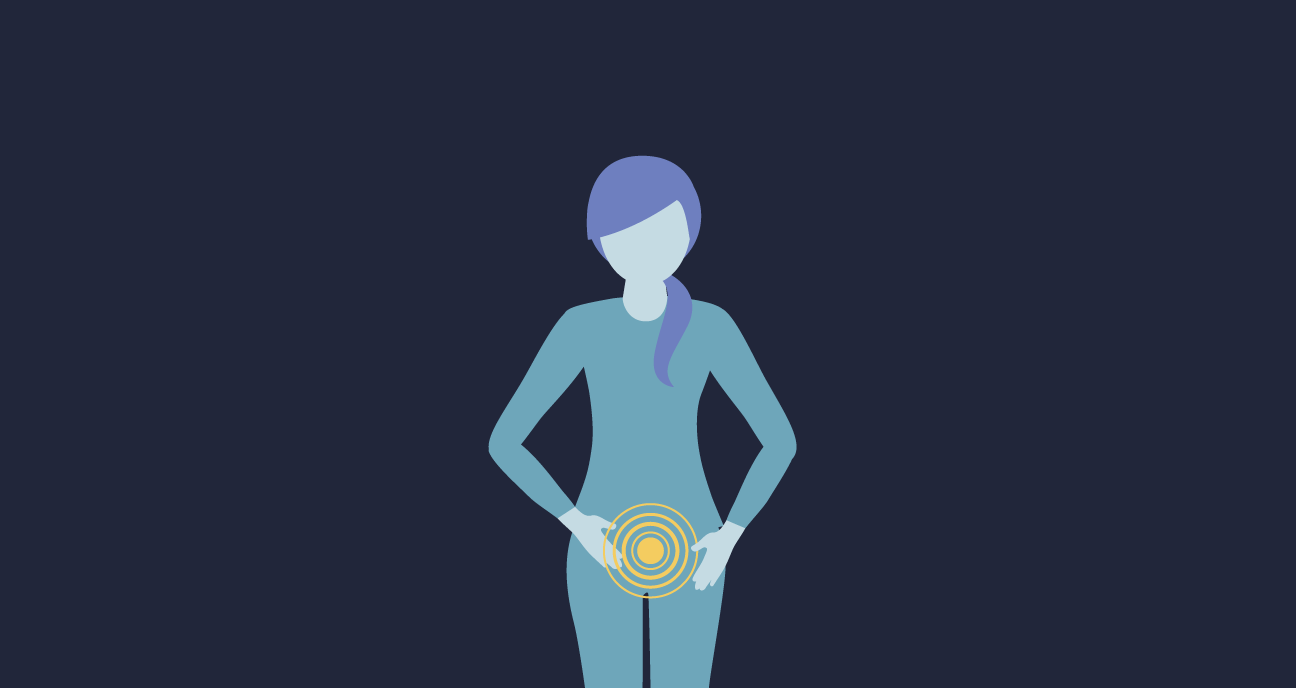How Endometriosis May Affect Your Fertility

Medically reviewed by Linda Streety, RN, BSN
There is no single experience of endometriosis, since it can affect your body in so many ways. One of those ways may be your fertility. To learn about how fertility treatment may help you get pregnant if you’re experiencing endometriosis-related infertility, read on!
Six Second Snapshot:
- Endometriosis occurs when tissue that is similar to the inner lining of the uterus grows outside of the uterus, which can cause pain, digestive issues, heavy menstrual bleeding, pain during sex, infertility, and more.
- Endometriosis can be the cause of a patient’s infertility, though not everyone with endometriosis will experience infertility.
- Treatment options for endometriosis patients who wish to get pregnant include operative laparoscopy, IUI, and/or IVF.
- IVF patients with less severe endometriosis have similar live birth rates as IVF patients without endometriosis.
What is endometriosis?
Every menstrual cycle, the layer of tissue lining the uterus – known as the endometrium – thickens in preparation to attach to a potential embryo and nourish it. If no embryo attaches, the inner lining of the endometrium is shed through menstruation.
Endometriosis (sometimes referred to as “endo”) occurs when tissue that is similar to the inner lining of the uterus grows outside of the uterus. While this migrating tissue usually ends up in the pelvis – attached to the ovaries, fallopian tubes, bladder, or other pelvic organs – in rare cases it can be found in other parts of the body.
The problem is that this tissue acts the same whether it’s in the uterus or outside of it, meaning that endometrial tissue still swells and breaks down with the menstrual cycle. Since endometrial tissue outside of the uterus is trapped inside the body, it has no place to go when it’s shed during menstruation. This can result in a variety of symptoms, including intense pain, digestive issues, heavy bleeding during menstruation, and/or pain during sex. However, not everyone with endometriosis will experience symptoms.
Clinicians look at many factors in determining the severity of a patient’s endometriosis, including the location, depth of implantation of the tissue, whether there are endometriomas ("chocolate cysts" on the ovaries), or adhesions (scar tissue).
Unfortunately, diagnosing endometriosis is not easy. Laparoscopy – a surgical procedure in which a small camera and light are inserted through a small incision in the abdomen – used to be considered the best way to diagnose endometriosis. However, imaging technologies such as ultrasounds and MRIs have improved to the point that they are now recommended as the primary method of diagnosing endometriosis in addition to (or in place of) a pelvic examination. However, if imaging results are negative and initial treatment is not successful, your clinician may still suggest a diagnostic laparoscopy (1).
How does endometriosis affect fertility?
Endometriosis is a very common cause of infertility; 30-50% of patients experiencing infertility have endometriosis. How endometriosis affects fertility is highly dependent on the patient, since the location of the tissue and severity of the condition can vary so much. In fact, patients with endometriosis may not experience fertility problems at all. But some possible ways that endometriosis may affect fertility include distorted or blocked fallopian tubes, scar tissue in the pelvis, an immobile uterus, inflammation, hormonal imbalance, and/or changes in egg quality (1).
What are my infertility treatment options if I have endometriosis?
If you have endometriosis and wish to become pregnant, your clinician will make personalized recommendations depending on the severity of the condition and how it might be affecting your fertility. Infertility treatment is complicated by the fact that some of the treatments for endometriosis-related pain include hormones and medications that affect the menstrual cycle, such as GnRH agonists, GnRH antagonists, progestogens, aromatase inhibitors, and hormonal contraceptives. Surgical treatment to reduce pain can also affect the ovaries and uterus. That said, infertility related to endometriosis can frequently be treated successfully (1).
Some treatment options include:
-
Operative laparoscopy - While diagnostic laparoscopy is conducted to explore the source of pain and extent of endometriosis, operative laparoscopy is conducted to remove cysts and scar tissue caused by endometriosis. Depending on how endometriosis is affecting the patient, operative laparoscopy may improve their chance of natural pregnancy.
-
Intrauterine insemination (IUI) - During IUI, sperm is placed directly in the uterus during ovulation to improve the patient’s chance of pregnancy. If the patient’s fallopian tubes are not blocked, IUI with ovarian stimulation (in which the ovaries are stimulated with hormones to produce more eggs than usual) may be a good choice.
-
In vitro fertilization (IVF) - During IVF, the patient’s ovaries are stimulated to produce more eggs than normal, which are retrieved in a surgical procedure and fertilized in a lab. Any resulting embryos can be placed back into the uterus. IVF may be a good choice for patients with tubal factor infertility caused by endometriosis, in which the fallopian tubes are blocked or otherwise compromised. Recurrence of endometriosis does not occur at higher rates for patients who undergo ART (artificial reproductive technology) than for patients who do not.
Patients with endometriosis may have heard that getting pregnant is a way of managing symptoms and slowing the progression of the disease. However, there is little evidence for this, and while lesions can sometimes reduce in size or disappear during pregnancy, that is not the case for all patients (1).
Does endometriosis affect success with IVF?
Success rates with IVF for patients with endometriosis are related to the severity of their disease. However, your particular success rate is related not just to the severity of your endometriosis but to how it affects your organs, whether you have endometriomas, and whether you are experiencing other infertility factors.
The research on success rates from IVF shows that while patients with less severe endometriosis may have a lower ovarian response and lower clinical pregnancy rate (in which the patient gets a positive test for pregnancy), this does not affect patients’ live birth rates. In fact, patients who undergo IVF with less severe endometriosis appear to have similar live birth rates as patients who undergo IVF without endometriosis. Patients with more severe endometriosis and/or endometriomas may experience a reduction in live birth rate (1).
As you can see in the chart below, derived from data drawn from the Society for Assisted Reproductive Technology from 2014-2019, there is a relatively small difference in success rates between patients who underwent IVF because their partner had male factor infertility (so the patient was presumably healthy and had no infertility diagnosis themselves) vs. all patients who underwent IVF with a diagnosis of endometriosis and no other infertility diagnosis.

Recent Articles
References
- “Endometriosis Guideline of European Society of Human Reproduction and Embryology.” European Society of Human Reproduction and Embryology, 2022.
Share this
Recent Articles

Learn everything you need to know about IVF
Join the newsletter for IVF education, updates on new research, and early access to Alife products.



